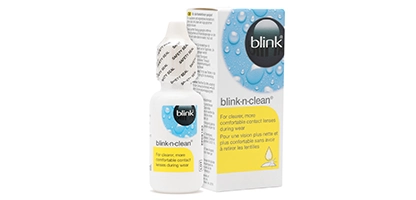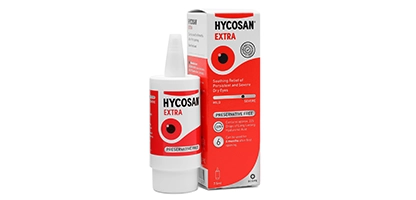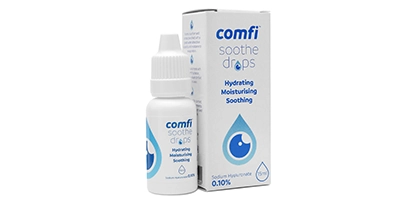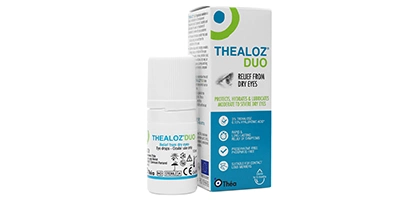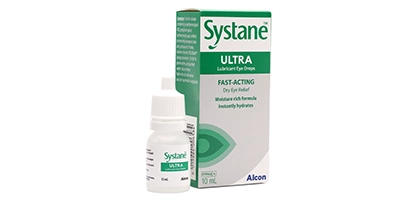Many contact lens wearers experience dryness or discomfort in their eyes. This condition is known as dry eyes or dry eye syndrome. If you’re experiencing the same, eye drops can be a good option for you.
In this article, learn about dry eyes, types of dry eye drops available and a list of optician-approved eye drops to relieve their symptoms.
What are dry eyes?
Dry eyes or dry eye syndrome is a common condition wherein the eyes do not produce enough quality tears, making your eyes dry. This condition is quite common and mostly experienced by lens wearers.
You can experience dry eyes when your eyes are under strain. This can be due to different reasons, including:
- Working in front of digital screen for prolonged hours
- Studying in dim light for extended periods
- Reduced blinking
- Sleep deprivation
- Dehydration
- Air quality or spending long hours in air-conditioned environments
- Seasonal factors, such as dry air in winter, dust, high winds, low humidity, etc.
- Allergies, or medication
If you’re a lens wearer, you're more likely to experience dry eyes because the lenses sit directly on the cornea, reducing oxygen flow. This can lead to discomfort, irritation, gritty eyes (feeling of having something stuck in the eye), itchy eyes and cloudy vision.
If you have this condition, putting in your lenses can become a hassle. Dry eye drops can help soothe your eyes and are especially helpful for contact lens wearers. These drops work like artificial tears and lubricate your eyes by adding real-like tear elements. Please note that not all eye drops for dry eyes can be used with lenses.
According to Tina Patel, Contact Lens Optician at Feel Good Contacts, using eye drops instantly provides comfort to lens wearers with dry eyes to help with clear and comfortable vision.
Types of eye drops for dry eyes
Lens wearers with dry eyes should choose their eye drops after consulting with their optician. There are four types of lens drops available:
1. Rewetting drops
Ideal for those who wear lenses regularly, rewetting drops are sterile solutions that moisturise your eyes, rehydrate the lens, and provide comfort throughout your wearing time.
2. Preservative-free
Preservative-free eye drops do not contain any preservatives or additives. Did you know that the tip of preservative-free eye drop bottles is equipped with sophisticated technology to filter out bacteria? This help to lower the risk of eye infection.
Tina Patel suggests going for preservative-free drops if you use eye drops over four times a day.
3. Drops and ointments
Gel-based eye drops are thicker than liquid formulations, and ointments are thicker than gel-based drops. Generally, gels or ointments are recommended for nighttime use.
4. Artificial tears
All lens drops for dry eyes are known as artificial tears, as they lubricate the eyes and keep them hydrated. These drops mimic your natural tears and can relieve dry eye symptoms. Most of the drops can be used up to six times a day but always check the label or follow your optician's advice.
Always consult your optometrist to ensure you are using the right drops based on your lens type.
Best contact lens drops for dry eyes
Below is the expert-curated list of top 5 lens compatible drops for dry eyes.

 Offers
Offers Account
Account
 Favorite
Favorite
 Basket
Basket

 OFFERS
OFFERS
















